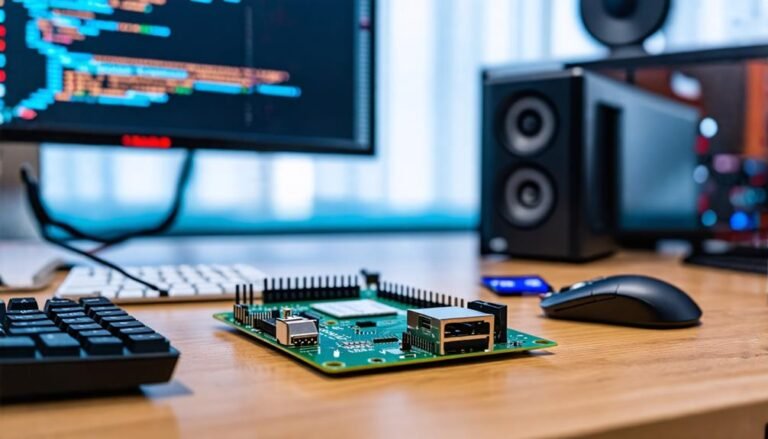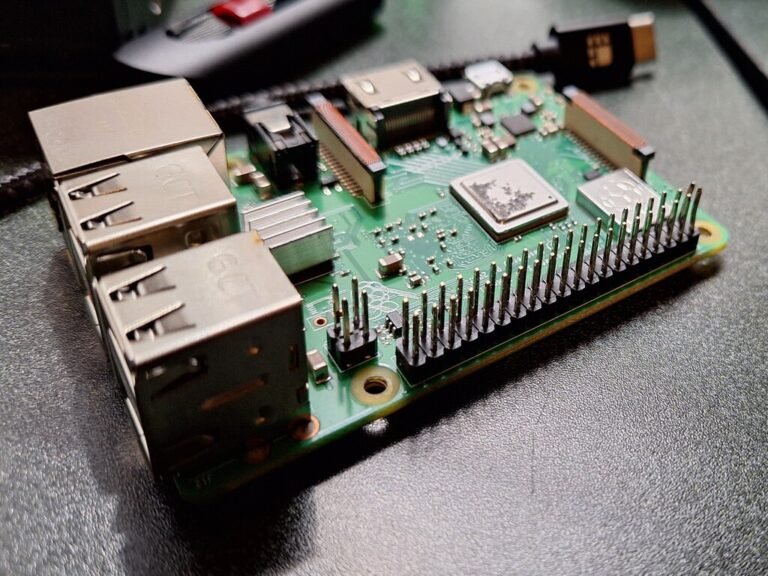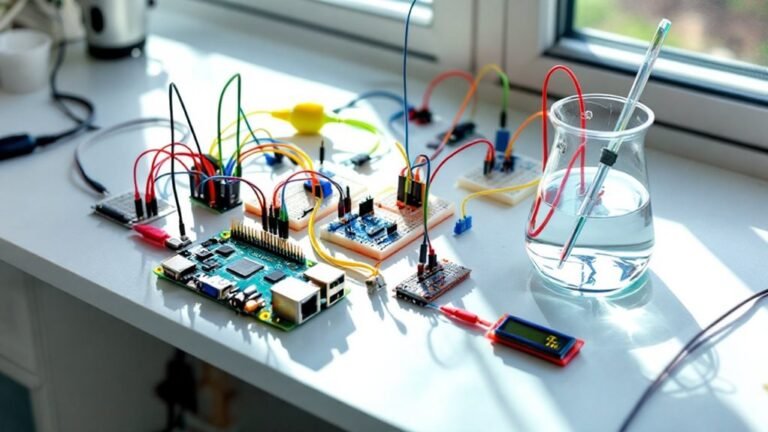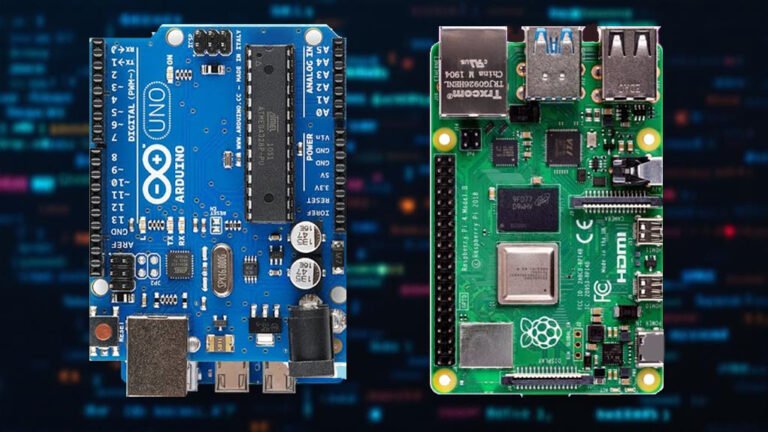Samba Active Directory Raspberry Pi
Introduction
Samba Active Directory Raspberry Pi setups are great for small labs and tight budgets. If you’re into running your own domain controller without melting your power bill, a Raspberry Pi and Samba 4 can get the job done. It’s lean, doesn’t eat electricity, and works better than you’d expect for a credit-card-sized machine.
This setup can handle LDAP, DNS, and Kerberos, acting as the backbone of your local network authentication. Whether you’re testing policies, isolating changes before pushing them to production, or just want to mess around in a low-risk environment, this is a practical use for that Pi collecting dust on your shelf.
Think of it as your home-grown Windows Server alternative, but quieter and cheaper.
Key Takeaways
- Raspberry Pi can handle Samba AD for labs, tests, and small networks
- Static IP, DNS, and time sync are non-negotiable
- Internal DNS is simpler, but Bind9 offers more control
- Backup configs regularly and test restores
- Use logs and
smbstatusto troubleshoot access issues - Secure your setup with SSH keys, fail2ban, and firewalls
- Don’t overload your Pi—focus it on domain services
Choosing the Right Raspberry Pi Model
Hardware requirements matter
Not all Raspberry Pis are created equal. For a Samba Active Directory deployment, the Pi 4 Model B is your safest bet. With up to 8GB of RAM, USB 3.0 ports, and a Gigabit Ethernet port, it doesn’t choke under network traffic or memory demands the way older models might.
Storage makes or breaks it
Your microSD card isn’t just for booting. Samba logs, Kerberos tickets, and DNS data write frequently, so use a reliable Class 10 or, better yet, a USB SSD. They handle I/O better and have lower failure rates.
Keep it cool
This little box gets warm when it’s busy authenticating users and dishing out DNS. Use heat sinks, a case with airflow, or even an active fan to stop thermal throttling. Overheating can cause domain service interruptions.
Stable network is non-negotiable
Active Directory needs consistent DNS and Kerberos responses. Ethernet is a must, and you’ll want a static IP to avoid service hiccups. Assign it in the Pi or through your router, but don’t rely on DHCP leases that change.
Power stability counts
You don’t want your controller crashing mid-authentication. Use a decent USB-C power supply with surge protection or, if you’re fancy, plug it into a small UPS. It doesn’t need much, but it needs to be consistent.
Preparing the Operating System
Pick the right OS flavor
Raspberry Pi OS Lite works well, but Ubuntu Server 22.04 LTS is often preferred for its longer support and package stability. Both work fine, just don’t install a full desktop if you’re only running Samba AD. That’s wasted RAM and power.
Initial setup matters
Change the hostname to match your intended domain controller name. Set the timezone, enable SSH, and update the system using apt update && apt upgrade. A fresh, clean base means fewer headaches later when DNS or Kerberos hiccups.
Static IP configuration
A domain controller with a dynamic IP is asking for trouble. Edit /etc/dhcpcd.conf or use netplan on Ubuntu to set a static IP, subnet mask, gateway, and DNS server pointing to itself.
DNS and hostname resolution
The Pi must resolve its own name properly. Add its hostname and domain to /etc/hosts, and make sure it doesn’t rely on external DNS during domain provisioning. Samba’s internal DNS or a Bind9 setup will replace that later.
Install your core packages
You’ll need samba, krb5-config, winbind, and a few dependencies like acl, attr, dnsutils, and ntp or chrony. Don’t install the whole samba meta-package unless you’re OK with extras you won’t use.
Setting Up Samba as an Active Directory Domain Controller
Install Samba from the right source
Use your package manager (apt install samba) or build from source if you need the latest features. Most Debian-based distros ship with Samba 4, which supports AD DC mode out of the box.
Provision the domain
Use samba-tool domain provision to create your domain. You’ll specify a realm (like LAB.LOCAL), NetBIOS name, and choose internal DNS or Bind9. Stick to internal DNS for simplicity unless you already know Bind inside out.
Kerberos setup and testing
Edit /etc/krb5.conf to reflect your realm and KDC. After provisioning, test with kinit administrator and check that it obtains a ticket. If not, double-check your time sync and config.
Configure smb.conf properly
Don’t edit it manually after provisioning unless you’re fixing something specific. Samba writes its own config based on your inputs. Use testparm to check syntax and watch out for old settings being ignored.
Enable and start services
Enable smbd, nmbd, and winbind, or just samba-ad-dc if you’re using the all-in-one service. Use systemctl to enable and start, then confirm status. Watch logs in /var/log/samba/ for startup errors.
Testing connectivity
Use ping, dig, and wbinfo -u to check user resolution. Try joining a Windows machine to your domain using RSAT tools. If it fails, it’s usually DNS, Kerberos, or time.
Configuring Users, Groups, and Permissions
Create users the Samba way
Use samba-tool user create to add new users. Stick to lowercase usernames and don’t use special characters. Give strong passwords unless you enjoy cleaning up security incidents.
Groups aren’t just decoration
Use samba-tool group addmembers to assign users to Domain Users, Domain Admins, or your own custom groups. This lets you apply file access rules, policies, and scripts across the board.
Roaming profiles and home directories
You can set \<dc>\profiles\%USERNAME% in user settings to store roaming profiles. Just make sure the share exists and permissions are tight. Same goes for homeDirectory settings.
Permissions aren’t just chmod
Samba supports Windows ACLs, so if your share isn’t behaving right, check both Linux file permissions and smb.conf ACL settings. Use getfacl and setfacl for file-level control.
Machine accounts need love too
When clients join the domain, Samba adds machine accounts (ending with $). These need proper permissions to talk to the domain. Don’t delete them accidentally—they matter more than you think.
Service accounts vs user accounts
If you’re integrating services like backup or print sharing, use service-specific accounts with minimal rights. Don’t run daemons as Domain Admin. That’s a security red flag the size of Texas.
File Sharing with Samba
Create your shares properly
Inside smb.conf, define shares under [yoursharename]. Set path, browseable, read only, and valid users. For example, [public] with guest ok = yes works, but only if you want anonymous access.
Permissions can trip you up
Linux permissions still apply. If smbd can’t write to the directory, neither can your users. Set ownerships correctly and don’t rely solely on Samba’s config—use chmod and chown wisely.
Mounting from Windows
From a Windows PC, you can mount a share using \IP_ADDRESS\sharename. Use File Explorer or net use from the command line. Make sure DNS and firewall rules aren’t blocking access.
Mounting from Linux
Install cifs-utils, then mount with something like:
sudo mount -t cifs //PI_HOSTNAME/share /mnt/share -o user=USERNAMEUse /etc/fstab for persistent mounts, and check for credentials files to avoid putting passwords in plain sight.
Check access with smbclient
This built-in Samba tool lets you test share access from Linux:
smbclient //localhost/share -U userGreat for verifying configs without involving clients.
Troubleshooting access problems
Check /var/log/samba/log.smbd and use testparm for syntax. If shares fail, it’s usually a mix of wrong permissions, guest access misconfig, or DNS resolution issues.
DNS, DHCP, and NTP Integration
DNS is critical for Active Directory
Don’t skip this. Active Directory needs working DNS like a car needs gas. Whether you go with Samba’s internal DNS or Bind9, your domain clients must resolve names through the controller.
Internal DNS vs Bind9
Internal DNS is easier and works well for small setups. Bind9 gives more control but demands a proper setup. If you’re not already comfortable with it, stick to internal DNS unless you enjoy debugging zone files.
DHCP: static leases win
Use your router or Pi-based DHCP server to assign static IPs to your domain clients. This keeps DNS and Kerberos consistent and avoids authentication failures tied to IP changes.
Time sync keeps Kerberos happy
If the domain controller and clients drift more than five minutes, Kerberos fails. Install chrony or systemd-timesyncd and configure the Pi to sync with a public NTP pool. You can even make it the NTP source for your network.
Testing DNS and NTP
Use dig, host, and nslookup to confirm A and PTR records. Run ntpq -p or chronyc tracking to check time drift. If kinit fails, it’s often a time issue.
Don’t mix DNS servers
Make sure your clients only use the Pi’s IP for DNS. Mixing in public DNS like Google or Cloudflare can bypass domain resolution and break logins.
System Logs and Monitoring
Logs tell you everything
Samba logs live in /var/log/samba/. Check log.smbd, log.nmbd, and per-host logs like log.CLIENTNAME for clues. When something breaks, this is where the truth lives.
Use journalctl like a pro
If you’re on a systemd-based distro, journalctl -u samba-ad-dc gives you service-specific logs. Use --since and --follow to filter and monitor in real time.
Watch your system health
htop, iotop, and vmstat give live feedback on how your Pi is handling things. If smbd starts eating CPU or memory, it’ll show up here first.
Keep tabs on shares
Run smbstatus to see who’s connected, what they’re accessing, and which files are open. It’s like a CCTV for your file shares—minus the lawsuits.
Automate log rotation
Use logrotate to keep logs tidy. Samba can get chatty, and full log partitions can bring your controller down. Nobody wants to explain that to themselves on a Saturday night.
Network monitoring helps too
iftop, ping, and netstat tell you what’s going in and out. If share access is slow or authentication hangs, these tools can spot network congestion or DNS delays.
Backup, Restore, and Maintenance
Backup or regret it
The domain controller holds your users, passwords, DNS, and group policies. Backup /etc/samba/, /var/lib/samba/, /etc/krb5.conf, and any DNS zones if you’re using Bind9. Forgetting the krb5.keytab file will ruin your week.
Use rsync, not hope
Rsync works well for incremental backups. Set it up via cron to push backups to a USB drive or network share. You don’t need fancy software—just reliability.
Snapshot the whole system
If you’re using a USB SSD, take periodic snapshots with dd or backup images with rpi-clone. It saves time when disaster strikes. Reinstalling Samba is easy, reconfiguring your domain? Not so much.
Test your restore process
Backups are only useful if they work. Try restoring on another Pi or VM to make sure your files are complete and Samba boots properly. Otherwise, you’re flying blind.
Rotate and purge old backups
Use date-based folders and scripts to keep the last few weeks. Store one offsite if you care about disasters. Nobody expects their house to flood until it does.
Update Samba carefully
Use apt-mark hold samba if you’re paranoid. When updating, back up first, then watch /var/log/samba/ like a hawk. Some updates change behavior or require schema upgrades.
Security Hardening
Lock down unnecessary services
If you’re not using print services or WINS, disable them in smb.conf. Every running daemon is another potential hole. Use systemctl disable for things like nmbd or winbind if they’re not needed.
Firewall or fail
Use ufw or iptables to allow only the required ports—445 for SMB, 53 for DNS, 88 for Kerberos, and 123 for NTP. Block everything else. Don’t leave your Pi open to the world.
Ban the bad guys
Install fail2ban and configure it to watch Samba and SSH logs. If someone’s trying brute force attacks, this kicks them out faster than you can say “logfile.”
SSH the smart way
Disable password logins and use SSH keys. Set PermitRootLogin no and consider changing the default port to reduce automated scans. You’re not running a datacenter, but bots don’t care.
Review sudoers
Only allow admin access to who really needs it. Don’t run Samba provisioning as root from scripts or cron. Audit the /etc/sudoers file and keep it clean.
Stay current on updates
Security patches don’t install themselves (unless you configure unattended-upgrades, which isn’t a bad idea). Check apt list --upgradable regularly or script reminders with cron.
Limit share access
Don’t allow guest access unless absolutely necessary. Use valid users and group restrictions in smb.conf. Expose only what you must—shared directories are goldmines for attackers.
Troubleshooting Common Issues
Time drift wrecks everything
Kerberos is sensitive to clock differences. If kinit or domain joins fail, check timedatectl or chronyc tracking. Sync your Pi and clients with the same NTP source.
DNS makes or breaks you
If Windows clients can’t find the domain controller, verify DNS. Use nslookup, dig, and check your A and SRV records. Your Pi should be the primary DNS server for all clients.
Can’t join the domain?
Confirm samba-ad-dc is running, DNS is resolving correctly, and the firewall isn’t blocking ports. Check /var/log/samba/ for errors, especially log.smbd and log.winbindd.
Kerberos ticket errors
Run klist and kdestroy to manage tickets. If kinit fails, check your krb5.conf, hostname, and time settings. Wrong realm or DNS means no ticket.
Services won’t start
Use systemctl status samba-ad-dc and journalctl -xe to look for dependency errors or syntax problems. Run testparm after editing smb.conf to spot issues before restarting.
Users can’t access shares
Double-check file permissions, Samba ACLs, and share definitions. Use smbclient to test access manually and confirm that the user is mapped and authenticated.
No users showing up
If wbinfo -u or getent passwd is blank, winbind isn’t working properly or isn’t linked with PAM. Recheck service status and ensure NSS is correctly configured.
Performance Tips and Limitations
Raspberry Pi has limits
It’s a powerful little box, but it’s still a microcomputer. Expect some delays during peak usage, especially if multiple clients are authenticating or accessing shares at once.
Monitor your resources
Use htop, vmstat, and iotop to watch CPU, RAM, and disk I/O. If the system starts swapping, reduce the number of services or offload shares to a separate file server.
Tune Samba for performance
Set aio read size, aio write size, and socket options in smb.conf for faster file access. Don’t overdo it—some tweaks help, some make things worse. Test before deploying changes.
Avoid GUI desktops
Running a full graphical environment wastes RAM and CPU cycles. Stick to headless operation and control the system via SSH or Webmin if you need a web interface.
Use better storage
microSD cards wear out and slow down. Move your system to a USB SSD or at least a high-endurance card. Use iotop to see how much disk thrashing Samba causes.
Don’t overload it
Running Pi-hole, Plex, and a domain controller on the same Pi? Don’t. Split those tasks across multiple Pis or VMs. Keep your domain controller focused on identity services.
Reboot occasionally
PIs can run for months, but sometimes a good reboot clears memory leaks or stuck services. Schedule one monthly with a cron job during off-hours.
Use Cases and Scenarios
Home labs
This is the perfect use case. You get to experiment with authentication, group policies, and share management without messing with a production network. It’s the IT version of a sandbox.
Classroom setups
Students learning about Windows domains or network authentication can get hands-on with real-world tools—without needing a full rack of servers. A few Pis, a switch, and you’re ready to teach.
Small office environments
Need simple user login control, shared drives, and access logs? Samba AD on a Pi can handle a handful of users if configured well. Just don’t expect enterprise-grade throughput.
Testing and staging
Before pushing changes to a production domain, test them here. New group policies, user scripts, or even RSAT tweaks can be validated on a Pi before affecting real systems.
Edge deployment
Got a remote location with flaky internet? A Pi can be a localized domain controller that syncs back with headquarters when a connection is available. It won’t replace Active Directory Sites and Services, but it’s functional.
Cross-platform labs
Integrate Linux and Windows machines under one domain. You can use it to troubleshoot compatibility, Samba share performance, and policy differences in a controlled setting.
IoT authentication
If you’re building a fleet of smart devices, having centralized login and access control—even at a small scale—can be done with a Samba AD setup on Pi. It’s lightweight, easy to replicate, and reduces chaos.
Final Thoughts
Running Samba Active Directory on a Raspberry Pi might sound like a stretch, but it works. For test labs, home networks, and teaching environments, it gives you most of the core features of a Windows Domain Controller—without the licensing headaches or energy bills.
Sure, it’s not going to replace a datacenter-grade setup, and it won’t handle hundreds of users or high-throughput file transfers. But that’s not the point. This is for learning, testing, and small-scale control.
If you’re thoughtful with your setup—solid power, good backups, and a bit of DNS discipline—you’ll get a surprisingly stable and usable AD controller from something you can power with a phone charger.
And if it breaks? It’s just a Pi. Restore a backup, grab another board, and move on.
FAQ
Can I use a Raspberry Pi Zero for this?
Technically, yes—but it’s slow and limited. Stick to a Pi 3B+ or 4.
Does Samba AD support Group Policy?
Yes, but only partially. You can manage some policies with RSAT, but not all.
Do I need internet for Samba AD to work?
No. Once set up, it can run entirely offline as long as DNS and time sync are functional.
Is it secure enough for production?
For small offices or isolated networks, yes—if hardened properly. For anything critical or large-scale, use full servers.
Can I run other services on the same Pi?
You can, but don’t. Keep your domain controller focused for reliability.
References
- Samba AD DC Setup Guide
- Raspberry Pi Documentation
- Microsoft Active Directory Docs
- Ubuntu Server Samba Docs
- Arch Linux Samba Guide








